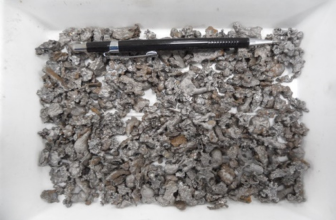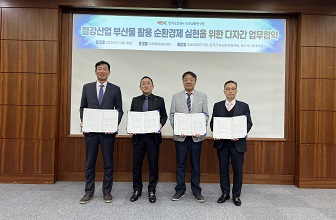Waste
Designated Wastes
Wastes containing hazardous substances are classified as “designated wastes” under the ENFORCEMENT DECREE OF THE WASTES CONTROL ACT of Korea. POSCO ensures full compliance in handling such wastes, and all disposal records are monitored through the Ministry of Environment’s electronic management platform (Allbaro System). Any violations are subject to penalties in accordance with the WASTES CONTROL ACT.
In 2024, POSCO achieved 100% lawful disposal of designated waste, with no spills or incidents reported. Moreover, the proportion of designated waste has steadily declined from 1.47% of total waste in 2017 to 0.53% in 2024.
Annual Volume of Designated Wastes
Resource Circulation
POSCO promotes a circular economy by recycling various by-products generated during the steelmaking process—including slag, dust, and sludge—to the greatest extent possible.
Since 2018, POSCO has been designated as a Resource Circulation Performance Management Target Site by the government and has steadily achieved the annual recycling targets. To minimize landfilling and incineration of unused by-products, we are developing resource utilization technologies and expanding end-use applications. As a result, POSCO has consistently maintained a by-product recycling rate of over 98%.
Blast Furnace Slag
Slag accounts for more than 75% of the total waste generated by steelworks and is classified into blast furnace slag and steelmaking slag. Blast furnace slag is produced during the ironmaking process and, when rapidly cooled with high-pressure water jets, forms a sand-like granulated slag. Most blast furnace slag is discharged as granulated slag. Its primary components, calcium oxide and silicon dioxide, can serve as substitutes for cement clinker1), helping to reduce GHG emissions during the calcination of traditional cement raw materials like limestone. In collaboration with RIST and POSCO E&C, we developed PosMent2), an eco-friendly cement that contains up to 58% more blast furnace slag than conventional slag cement, significantly contributing to GHG reduction and industrial waste recycling.
Blast furnace slag is also utilized as a raw material for siliceous fertilizers, as it contains high levels of silicic acid, an essential nutrient for rice growth. Silicic acid strengthens rice stalks—making them up to three times more robust—and improves rice quality, including flavor and resilience. Additionally, iron ions(Fe³⁺) in the slag reduce the activity of methane-producing bacteria, lowering methane(CH₄) emissions during rice cultivation by approximately 14%. In partnership with Korean universities, POSCO quantified the methane-reduction effect of silicate fertilizer. In January 2022, this outcome led to its recognition as a Korean-type GHG Correction Factor by the government. Subsequently, in May 2024, the technology was officially designated as a carbon reduction agricultural practice by the Ministry of Agriculture, Food and Rural Affairs(MAFRA).
1)Cement clinker is produced by calcining raw materials such as limestone at high temperatures. When this clinker is ground into a fine powder, it becomes the main component of cement.
2) PosMent is a type of slag cement developed by POSCO. It improves performance by incorporating a chemical activator and increasing the granulated blast furnace slag content to up to 58%, compared to conventional slag cement.
Steelmaking Slag
Steelmaking slag is generated during the refining process, where impurities are removed from molten steel and the chemical composition is adjusted to meet the specifications of each steel product. Once produced, steelmaking slag is crushed and magnetically separated to recover valuable iron(Fe), which is then reused in the steelmaking process. The remaining residual slag is repurposed as a construction aggregate, thanks to its chemical and physical similarity to natural rock. At civil engineering sites, the use of slag aggregate may result in leachate when exposed to water. To ensure environmental safety, POSCO adheres to the Slag Management Guidelines issued by the Korea Iron and Steel Association.
To minimize environmental impact, steelmaking slag is increasingly used in non-media contact applications, such as asphalt road paving, where the risk of leachate is lower. Compared to natural aggregates, steelmaking slag offers more uniform particle shape and higher strength, extending asphalt road lifespan by approximately 2.2 times and helping to reduce fine dust emissions. Additionally, by-products such as dust and sludge from dust collectors and water treatment facilities—often rich in iron—are either reused in their raw form or processed into pellets and briquettes, and reintegrated into the ironmaking and steelmaking processes.
-

Magnetic Fine Iron Ore
-

MOU on Promoting Steelmaking Slag-Based Asphalt Applications
-

High-Iron Briquettes
